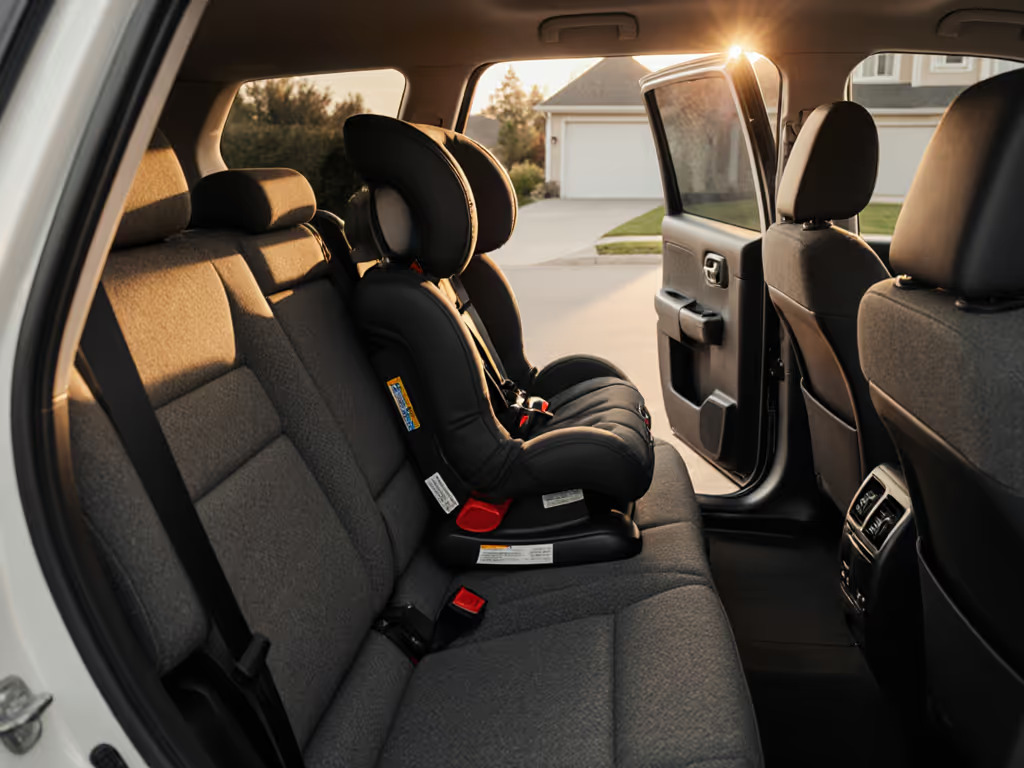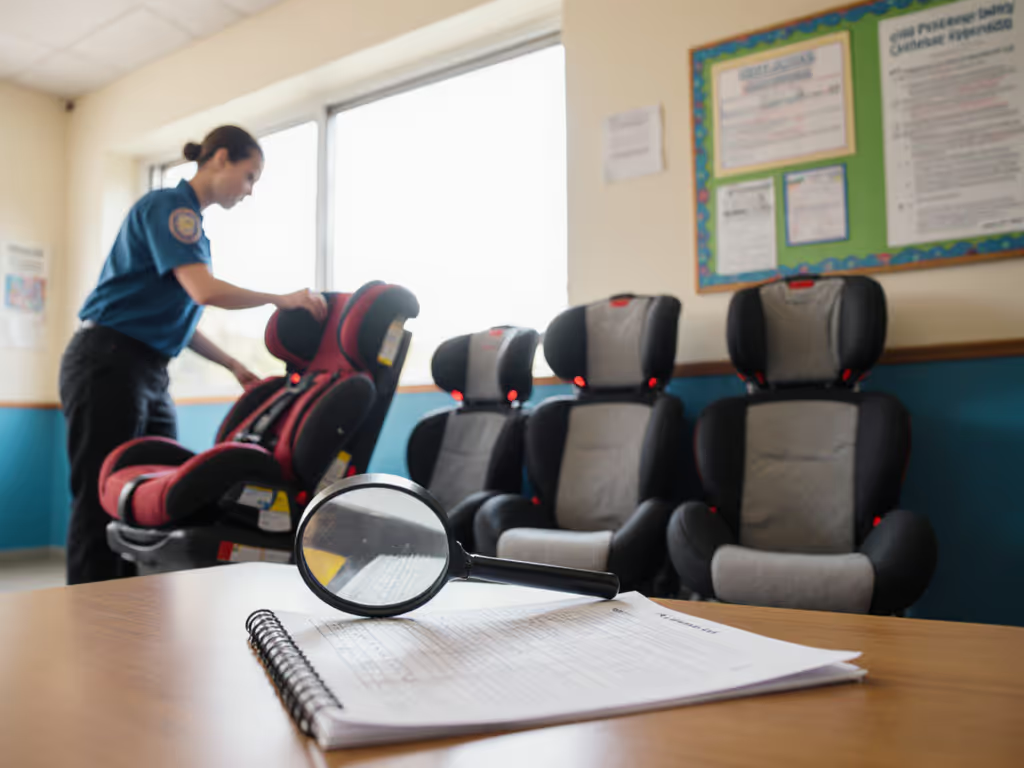
What Is Extended Rear Facing? Complete Safety Guide
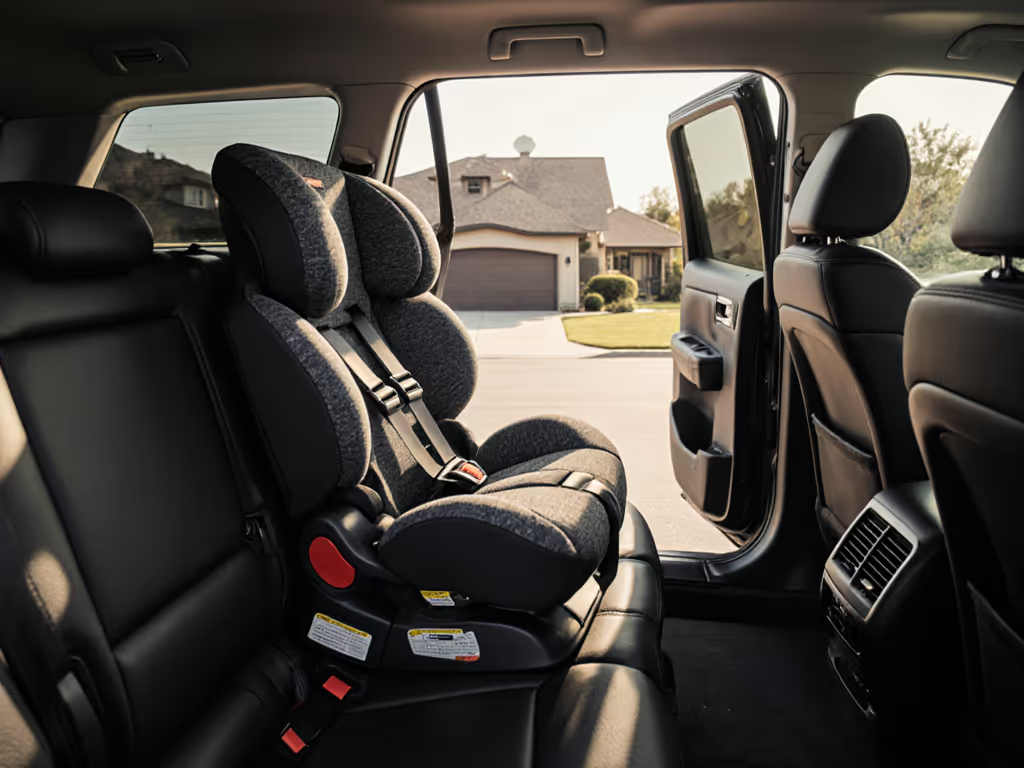
Did you know that rear-facing car seats reduce fatal injury risk for infants by up to 71 percent? Car accidents remain a leading threat to young children, but many parents may not realize how extended rear-facing protection can make a lifesaving difference. By understanding the science, options, and correct usage behind rear-facing seats, you can give your child the safest possible start every time you buckle them in.
Key Takeaways
| Point | Details |
|---|---|
| Extended Rear Facing | Prioritize extended rear facing to significantly reduce spinal and head injury risks in children during collisions. |
| Types of Car Seats | Choose from infant-only, convertible, or all-in-one car seats based on your child's growth and weight limits for optimal safety. |
| Proper Installation | Ensure correct installation practices, including the seat angle and harness tightness, to maximize protection during travel. |
| Transition Timing | Delay transitioning to forward-facing car seats until children exceed specific height or weight limits, not merely based on age. |
Defining Extended Rear Facing for Car Seats
Extended rear facing isn't just a recommendation - it's a life-saving approach to child passenger safety. Unlike traditional car seat guidelines that suggest transitioning children to forward-facing seats at a specific milestone, extended rear facing prioritizes protecting your child's most vulnerable body parts during a collision.
At its core, extended rear facing means keeping your child seated facing the rear of the vehicle beyond the minimum age and weight requirements. The National Highway Traffic Safety Administration (NHTSA) explains this approach provides significantly better support for a child's head, neck, and spine during potential crashes. By distributing crash forces more evenly across the child's back, rear-facing positions dramatically reduce the risk of serious injury.
The American Academy of Pediatrics strongly endorses this approach, recommending that infants and toddlers remain in rear-facing car seats as long as possible. Key advantages of extended rear facing include:
- Substantially reduced risk of spinal and head injuries
- Better energy absorption during potential collisions
- Protection of critical developmental anatomy
- Alignment with advanced safety research
Parents should consult their specific car seat manufacturer's guidelines, as maximum height and weight limits can vary. The goal is simple: maximize protection during the most vulnerable years of your child's life.
Types of Rear Facing Car Seats Explained
Navigating the world of rear-facing car seats can feel like decoding a complex puzzle. Not all car seats are created equal, and understanding the different types can help you make the safest choice for your child. The National Highway Traffic Safety Administration (NHTSA) recognizes three primary categories of rear-facing seats, each designed to accommodate different stages of your child's growth.
Here's a comparison of the main types of rear-facing car seats:
| Car Seat Type | Weight Limit | Convertible | Key Advantages |
|---|---|---|---|
| Infant-Only | 22-35 lbs | No | Lightweight<br>Portable<br>Easy transfer |
| Convertible | 40-50 lbs (rear-facing) | Yes | Extended use<br>Higher limits<br>Versatile |
| All-in-One | 40-50 lbs (rear-facing)<br>Higher for later stages | Yes | Long-term value<br>3-in-1 design<br>Cost-effective |
Infant-Only Seats represent the first stage of protection. These compact seats are specifically designed for newborns and younger infants, typically supporting children up to 22-35 pounds. They're lightweight, portable, and often feature detachable bases that can be left installed in the vehicle. The key advantage? Convenience for parents who want to transfer a sleeping baby without disturbing their rest.
As your child grows, convertible car seats become the next critical safety solution. Unlike infant-only seats, these versatile seats can transition from rear-facing to forward-facing positions, offering extended protection. Manufacturers typically provide higher weight and height limits - often supporting children up to 40-50 pounds in the rear-facing configuration. This flexibility means you can keep your child safer for a longer period.
The most comprehensive option is the all-in-one car seat, which truly lives up to its name. These seats can:- Start as rear-facing infant seats- Convert to forward-facing toddler seats- Transform into booster seats for older children
While more expensive upfront, all-in-one seats can provide the most long-term value, potentially supporting your child from birth through elementary school. Always check specific manufacturer guidelines for exact height and weight limits to ensure optimal protection.
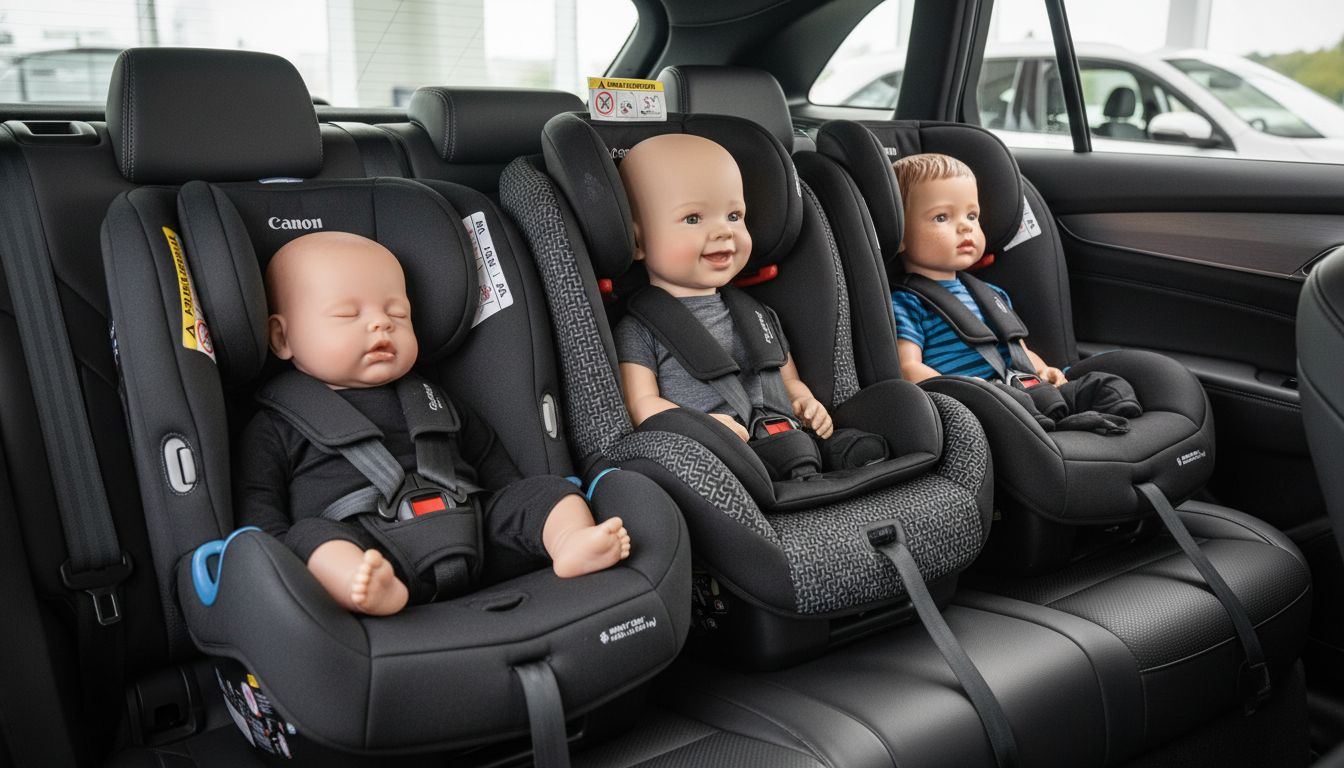
Safety Science and Injury Prevention Benefits
Biomechanical research has revolutionized our understanding of child passenger safety, revealing critical insights that make extended rear-facing car seats a game-changer for injury prevention. The stark reality is that children's anatomical differences make them extraordinarily vulnerable during vehicle collisions, with their developing skeletal and muscular structures requiring specialized protection.
The National Highway Traffic Safety Administration (NHTSA) provides compelling evidence: car seats in passenger vehicles reduce an infant's risk of fatal injury by an astounding 71%. This dramatic reduction stems from the unique biomechanical advantages of rear-facing positioning. When a crash occurs, rear-facing seats cradle the entire body, distributing potentially devastating impact forces across the child's back, head, and neck simultaneously.
Key scientific principles that make rear-facing seats superior include:
- Energy Absorption: The seat's shell absorbs and redirects crash forces away from the child's fragile body
- Spinal Protection: Prevents dangerous hyperextension of the neck during sudden stops
- Cranial Support: Minimizes head movement and potential traumatic brain injuries
- Structural Alignment: Maintains natural body positioning during unexpected vehicle movements
Research from pediatric safety experts consistently demonstrates that rear-facing orientation provides up to five times greater protection compared to forward-facing alternatives.
 This isn't just about comfort - it's about leveraging scientific understanding to create a protective cocoon that shields children during their most vulnerable years.
This isn't just about comfort - it's about leveraging scientific understanding to create a protective cocoon that shields children during their most vulnerable years.
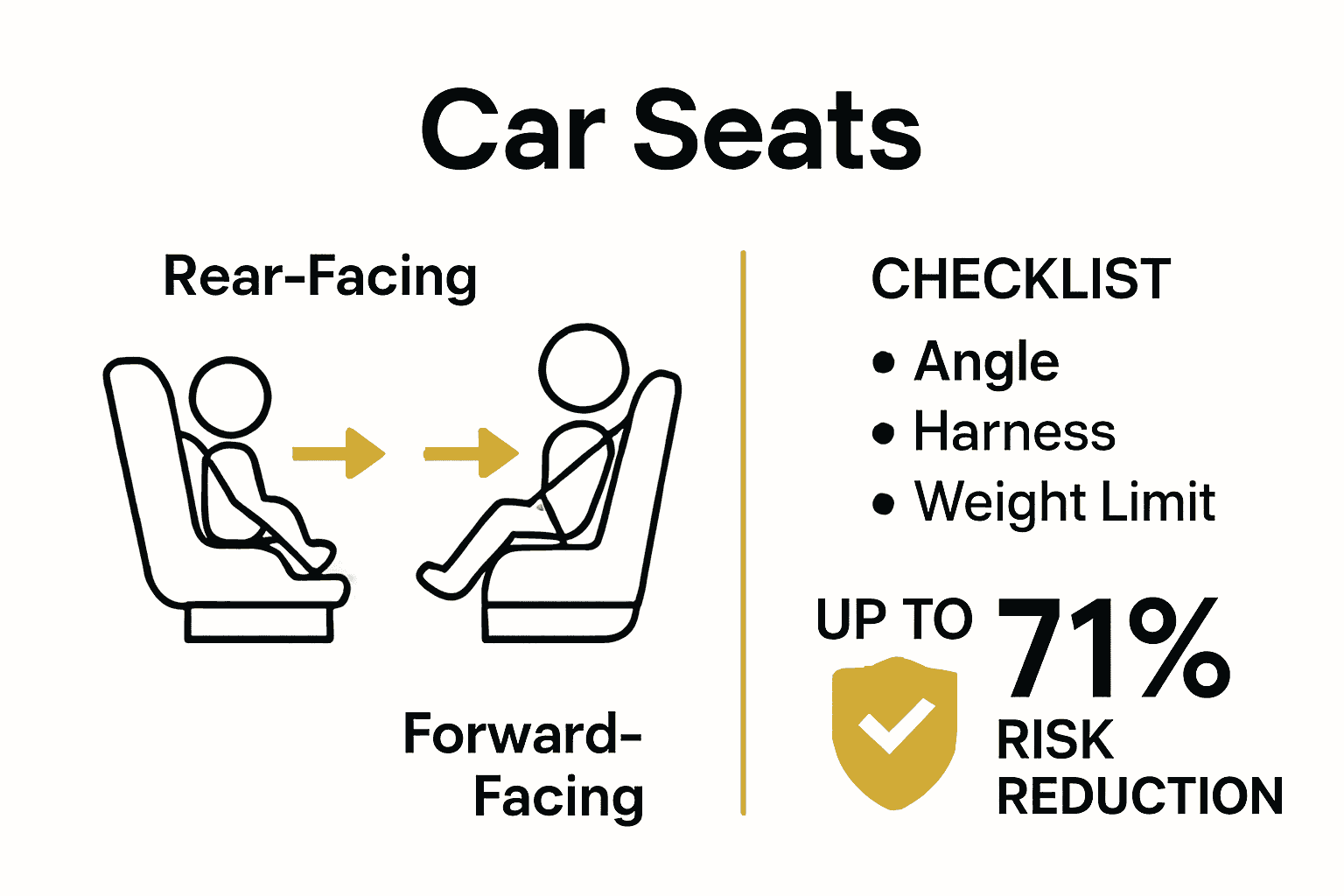
Legal Guidelines and Regional Standards Worldwide
Child passenger safety is a complex landscape of regulations that vary significantly across different regions and jurisdictions. While core principles remain consistent, the specific legal requirements for rear-facing car seats can differ dramatically between countries, states, and even local municipalities. Understanding these nuanced guidelines is crucial for parents committed to maximizing their child's safety.
In the United States, the National Highway Traffic Safety Administration (NHTSA) provides comprehensive guidance that serves as a benchmark for child passenger protection. Their primary recommendation is unequivocal: parents should always follow their specific car seat manufacturer's height and weight limit instructions. This means carefully reviewing both the car seat manual and the vehicle owner's manual to ensure proper installation using seat belts, lower anchors, or tethers.
Key legal considerations for rear-facing car seat compliance include:
- Strict adherence to manufacturer-specified height and weight limits
- Proper installation techniques using approved anchoring systems
- Regular inspection and replacement after significant accidents
- Age-appropriate seat selection based on child's developmental stage
- Documentation and certification of car seat safety standards
While specific regulations can vary, most developed nations have converged on similar core principles. The American Academy of Pediatrics recommends that all infants and toddlers ride rear-facing as long as possible, a guideline echoed by safety experts worldwide. This approach prioritizes child protection over convenience, recognizing that comprehensive legal standards are ultimately about preserving young lives.
Correct Installation and Common Mistakes to Avoid
Car seat installation is a critical safety process that seems simple but requires meticulous attention to detail. Even minor errors can significantly compromise your child's protection during travel. The National Highway Traffic Safety Administration (NHTSA) emphasizes that most car seat installations have multiple potential points of failure, making professional guidance essential.
One of the most common mistakes parents make is improper seat angle and tightness. A rear-facing seat must be installed at the correct recline angle - typically between 30-45 degrees - to prevent a child's head from flopping forward and potentially obstructing breathing. The seat belt or lower anchor system must be extremely tight, with less than an inch of movement when you push or pull the seat at the base. A good test? If you can move the seat more than an inch in any direction, it's not secure enough.
Critical installation checkpoints include:
- Ensuring zero gap between car seat and vehicle seat
- Using either LATCH system or seat belt - never both simultaneously
- Checking harness straps are snug with no twists
- Positioning chest clip at armpit level
- Verifying seat does not rock more than 1 inch in any direction
The most valuable resource many parents overlook is Certified Child Passenger Safety Technicians (CPST). These professionals can provide free installation checks, identifying potential issues that untrained eyes might miss. Their expertise can mean the difference between a potentially dangerous setup and a truly safe travel environment for your most precious passenger.
When and How to Transition From Rear Facing
Transitioning from rear-facing car seats is a delicate process that requires careful consideration of your child's physical development, not just their age. The National Highway Traffic Safety Administration (NHTSA) provides clear guidance: keep your child rear-facing as long as possible, specifically until they reach the maximum height or weight limit specified by the car seat manufacturer.
Most parents mistakenly believe that reaching a certain age automatically means it's time to switch positions. In reality, physical readiness is the critical factor. Convertible car seats with higher rear-facing weight limits typically accommodate children up to 40-50 pounds, which can extend rear-facing protection well beyond the toddler years. Look for specific indicators like your child's head approaching the top of the seat, shoulders exceeding the top harness slot, or the seat manufacturer's explicit maximum height recommendation.
Key transition considerations include:
- Checking manufacturer's specific height and weight limits
- Ensuring child's head is not extending beyond seat shell
- Verifying harness straps still fit snugly at or below shoulder level
- Assessing vehicle compatibility with extended rear-facing
- Consulting a Certified Child Passenger Safety Technician for personalized advice
Remember, transitioning too early compromises safety. Forward-facing seats expose children to significantly more potential injury during crashes, so patience isn't just a virtue - it's a critical protection strategy. When in doubt, always prioritize staying rear-facing longer over rushing to the next stage.
Keep Your Child Safely Rear Facing for Years with Expert Seat Guidance
Extended rear facing offers unmatched protection for your child but choosing the right convertible car seat that fits your vehicle and keeps your little one comfortable and secure can feel overwhelming. You want to avoid common challenges like improper installation, confusing weight limits, and early transitions that could compromise safety. This means finding seats that support longer rear-facing use while matching your child's growth and your daily needs.
At Fits for Years Seats, we understand how important it is to maximize those critical early years of safety. Our research-driven guides and detailed product comparisons help you navigate options that meet rigorous safety standards and provide ergonomic comfort. Discover how to make sense of convertible car seats designed for extended rear facing by visiting our site today. Don’t wait to protect your child with seats that are proven to perform well beyond the minimum requirements.
Explore practical tips and personalized recommendations now by visiting Fits for Years Seats. Your child’s safest ride starts here.
Frequently Asked Questions
What is extended rear facing for car seats?
Extended rear facing means keeping your child seated facing the rear of the vehicle beyond the minimum age and weight requirements, providing better protection for their head, neck, and spine during a collision.
What are the benefits of using an extended rear-facing car seat?
The benefits include significantly reduced risk of spinal and head injuries, better energy absorption during crashes, protection of critical developing anatomy, and alignment with advanced safety research.
How long should a child remain in a rear-facing car seat?
A child should remain in a rear-facing car seat as long as possible, specifically until they reach the maximum height or weight limit specified by the car seat manufacturer, which is often 40-50 pounds for convertible and all-in-one seats.
What are the different types of rear-facing car seats?
The three main types of rear-facing car seats are infant-only seats, convertible seats, and all-in-one seats. Each type has different weight limits and versatility, catering to children from newborn to older toddler stages.



